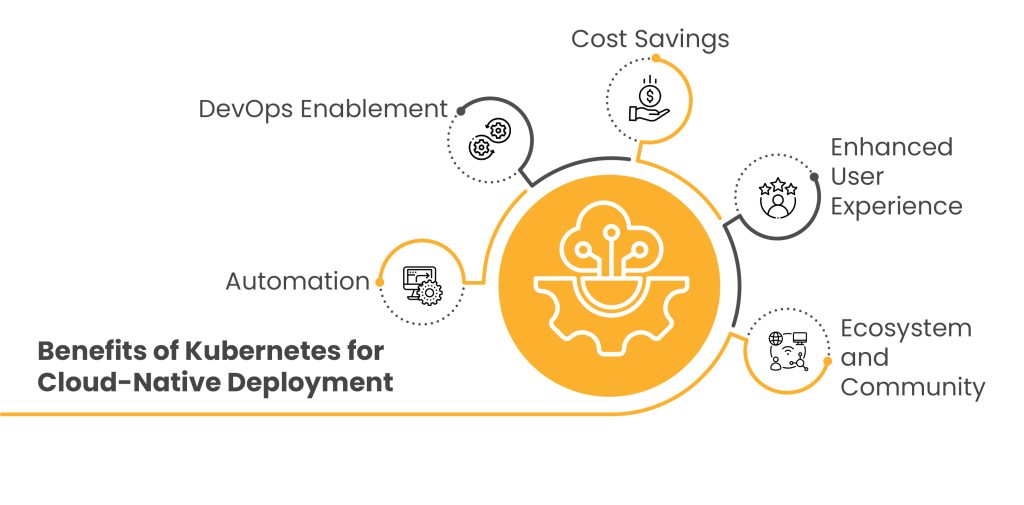

ACL Digital
Unlocking the Power of Kubernetes: Essential for Cloud-Native Architecture Deployment
Understanding Kubernetes
Kubernetes, often called K8s, is an orchestration platform that automates containerized applications’ deployment, scaling, and management. Containers provide a lightweight and consistent application environment, making them portable across different computing environments. However, managing many containers through manual methods can quickly become unwieldy. Here is where Kubernetes steps in.
Kubernetes offers a robust set of features that simplify the management of containerized applications:
Container Orchestration
Kubernetes abstracts the complexities of managing individual containers by providing tools to define deployment, interconnection, and scalability.
Automated Scaling
Kubernetes can automatically scale applications based on demand, ensuring optimal resource utilization while maintaining performance.
Self-Healing
If a container or node fails, Kubernetes automatically replaces it with a healthy instance, ensuring high availability.
Load Balancing
Kubernetes distributes incoming network traffic across multiple instances of an application to prevent overload on any single model.
Configuration Management
Kubernetes separates application code from configuration, allowing easy updates and rollbacks without changing the code.
Declarative Approach
Users define the desired state of their applications and infrastructure, and Kubernetes works to ensure the actual state matches the desired shape.
Challenges and Considerations when Implementing Kubernetes
While Kubernetes offers remarkable benefits for cloud-native architecture, its implementation comes with its set of challenges and considerations:
Complexity
Managing a Kubernetes cluster involves dealing with various components, networking configurations, and storage considerations. Organizations need to plan for the complexity of managing these aspects effectively.
Resource Management
While Kubernetes optimizes resource utilization, misconfigurations can lead to over- or under-provisioning of resources. Careful monitoring and fine-tuning are necessary for cost-effective resource management.
Security
Securing a Kubernetes environment requires expertise in network policies, access controls, and container vulnerabilities. Ensuring a solid security posture is vital to prevent breaches and data leaks.
Vendor Lock-In
Despite its portability benefits, organizations might face challenges migrating applications across cloud providers or environments due to varying Kubernetes distributions and configurations.
To address these challenges effectively:
Managed Services:
Consider using managed Kubernetes services provided by cloud providers. They can handle the underlying complexities, allowing your team to focus on application development.
Monitoring and Security
Implement robust monitoring and security practices. Leverage tools and best practices to detect and mitigate security vulnerabilities and ensure compliance.
Architecture Planning
Develop a comprehensive architecture plan that addresses resource allocation, networking, storage, and security. Regularly review and adjust this plan as your application evolves.
Importance in Cloud-Native Architecture
Cloud-native architecture revolves around designing applications that leverage the full potential of cloud computing. Kubernetes plays a pivotal role in achieving the critical tenets of cloud-native deployment:
Scalability
Kubernetes allows applications to scale horizontally by adding or removing instances as needed, ensuring optimal performance even during traffic spikes.
Resilience
With features like automated healing and fault tolerance, Kubernetes enhances application resilience by swiftly recovering from failures without manual intervention.
Agility
Kubernetes’ declarative approach and container-based architecture enable rapid deployment and updates, facilitating continuous integration and continuous delivery (CI/CD) practices.
Portability
Applications deployed on Kubernetes are encapsulated within containers, making them highly portable across various cloud providers and on-premises environments.
Resource Efficiency
Kubernetes optimizes resource utilization by dynamically allocating resources based on application demand, reducing wastage and costs.
Microservices Architecture
Kubernetes is well-suited for managing microservices-based applications, allowing different components of an application to be develop, deploy, and scale independently.
Benefits of Kubernetes for Cloud-Native Deployment

Automation
Kubernetes automates many manual tasks related to deployment, scaling, and management, reducing human error and operational overhead.
DevOps Enablement
Kubernetes promotes collaboration between development and operations teams through its streamlined deployment processes and self-service capabilities.
Cost Savings
Efficient resource utilization and automated scaling lead to better cost management in cloud environments.
Enhanced User Experience
Kubernetes’ load balancing and self-healing features ensure a seamless and uninterrupted user experience.
Ecosystem and Community
Kubernetes boasts a vibrant community and a rich ecosystem of tools, plugins, and extensions that enhance its functionality.
Conclusion
Related Insights


Business success with Oracle Netsuite Consulting Services: What role do NetSuite consultants play?

5 Caution Alerts Your Infrastructure Will Block Digital Transformation

